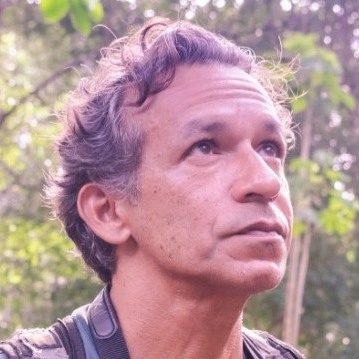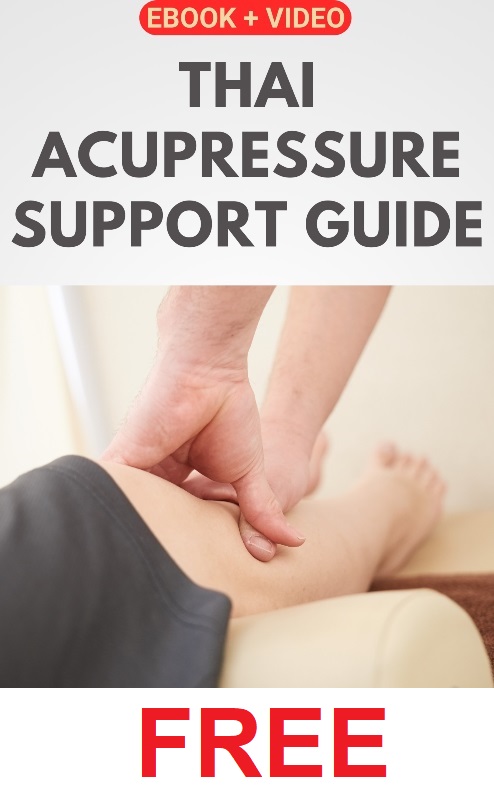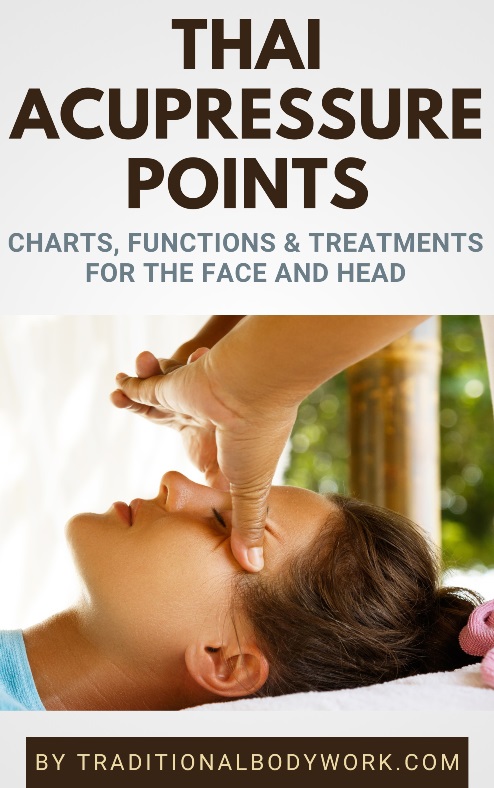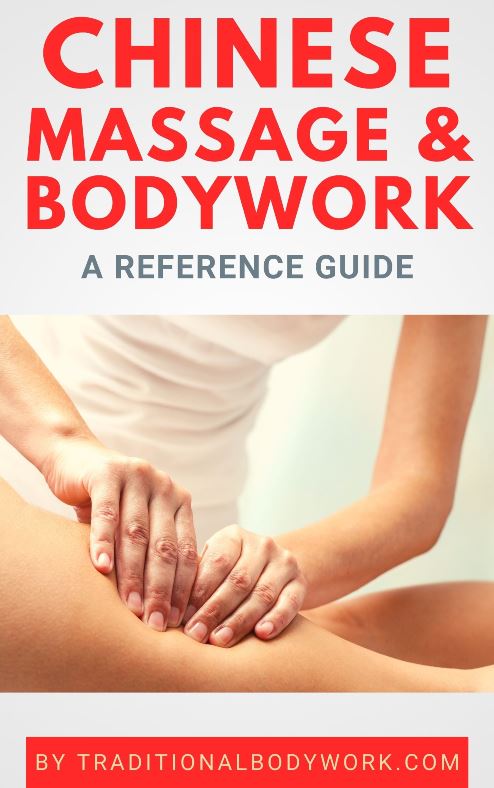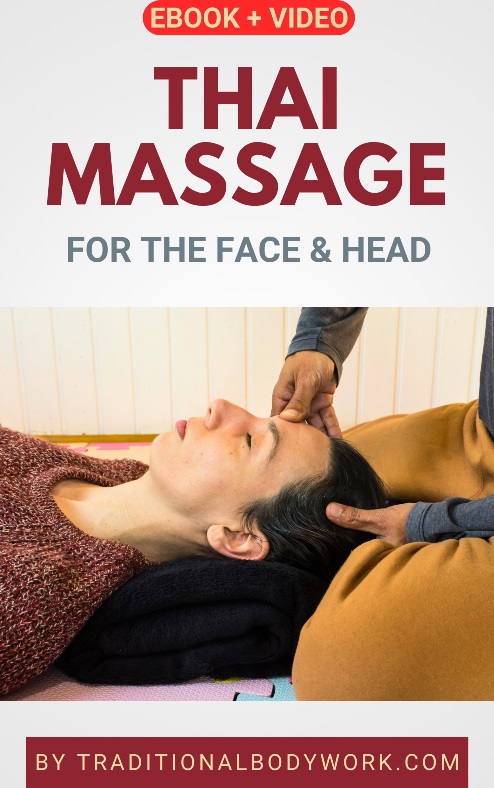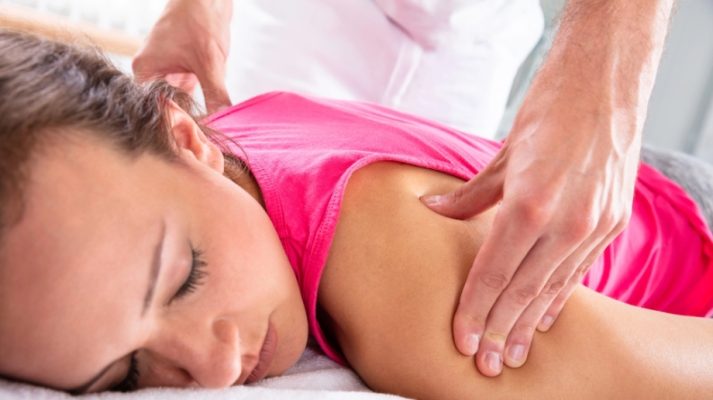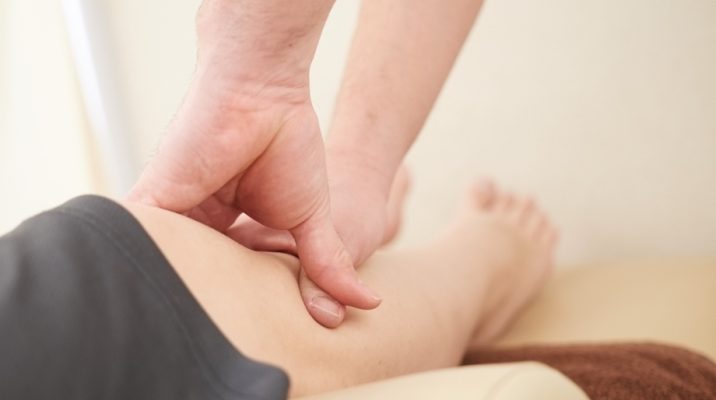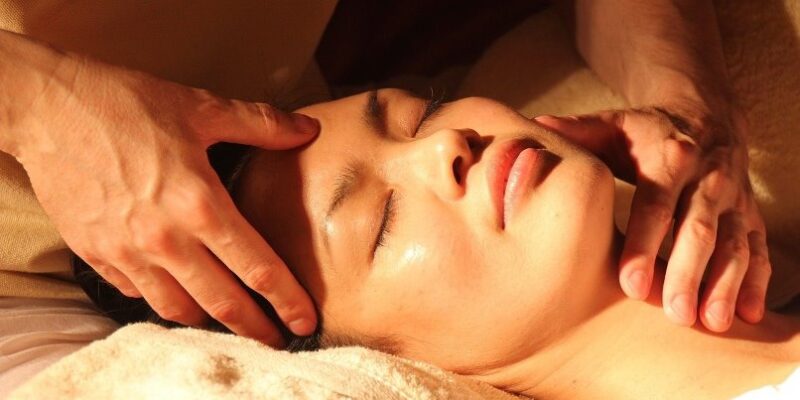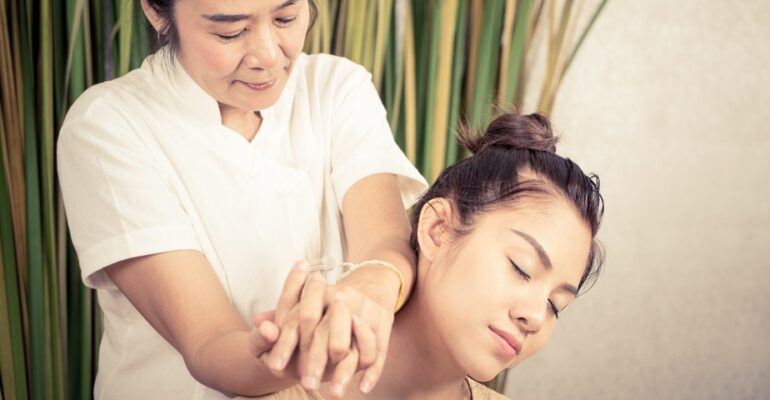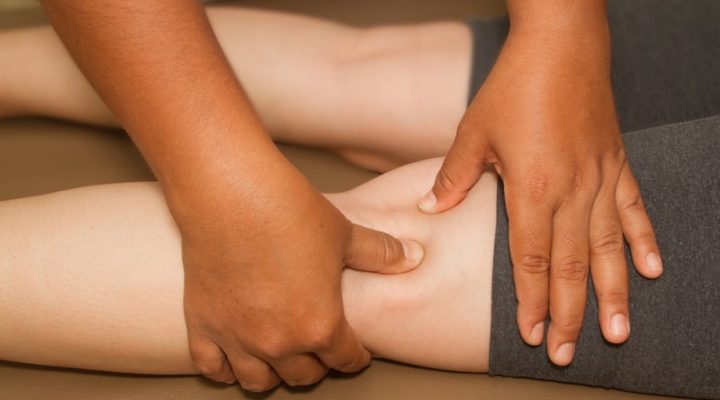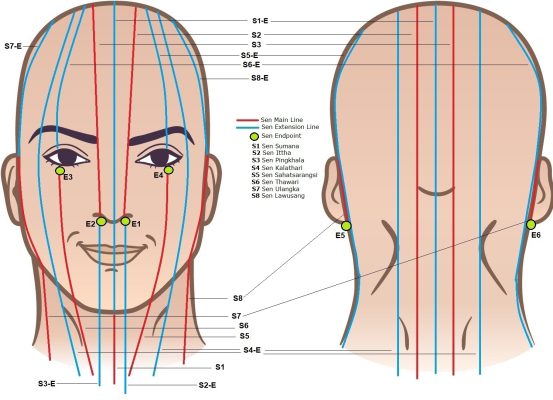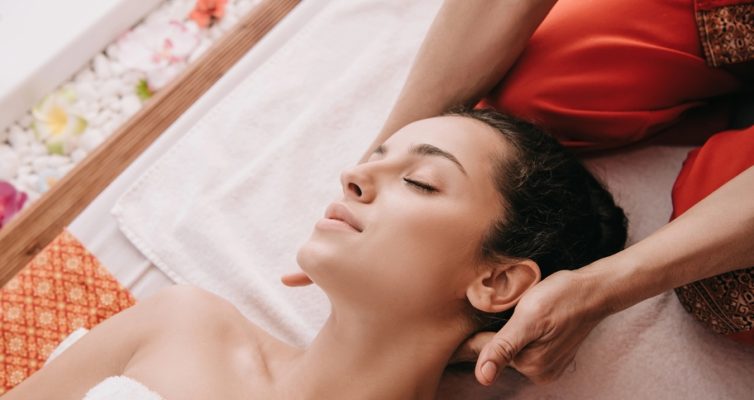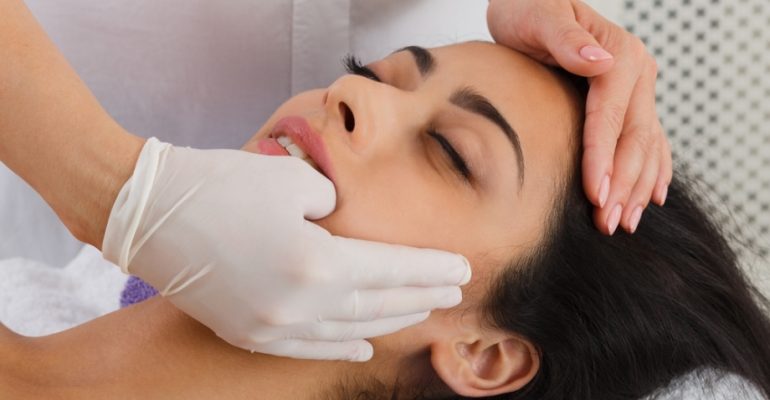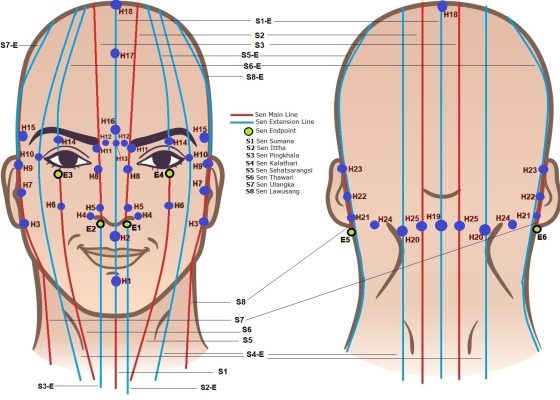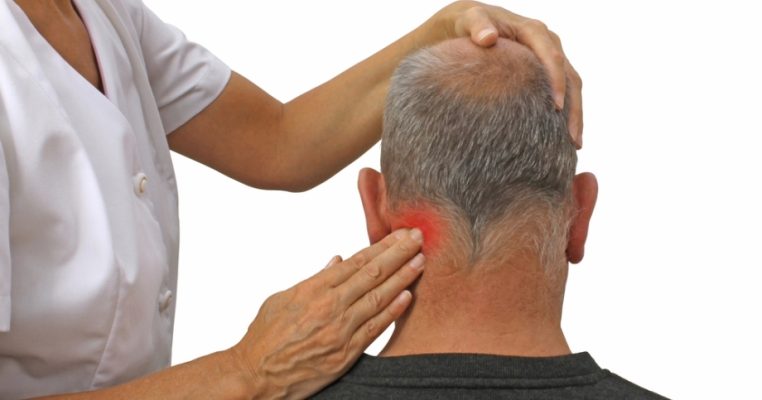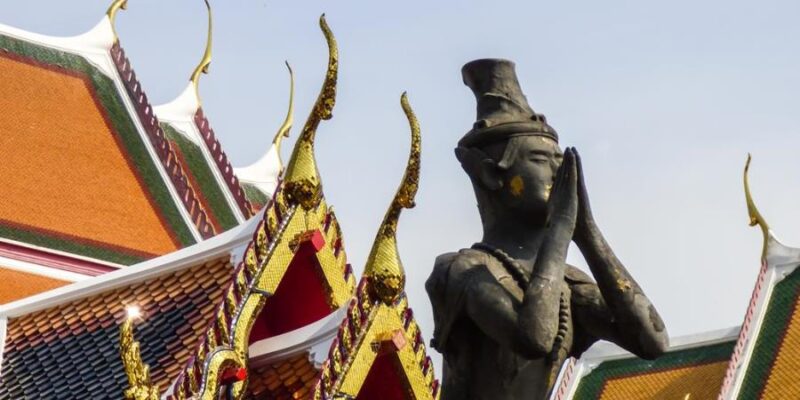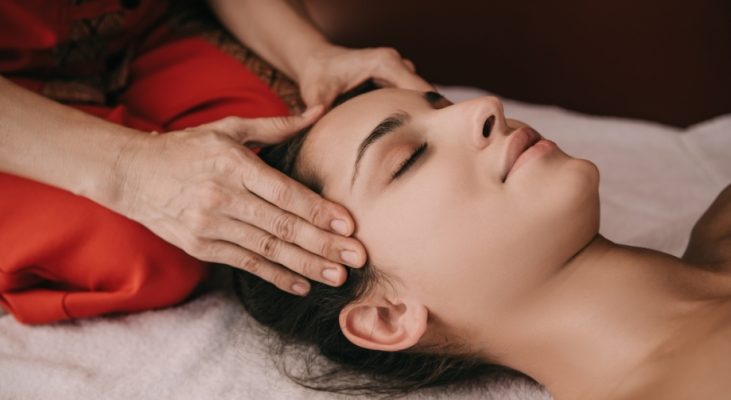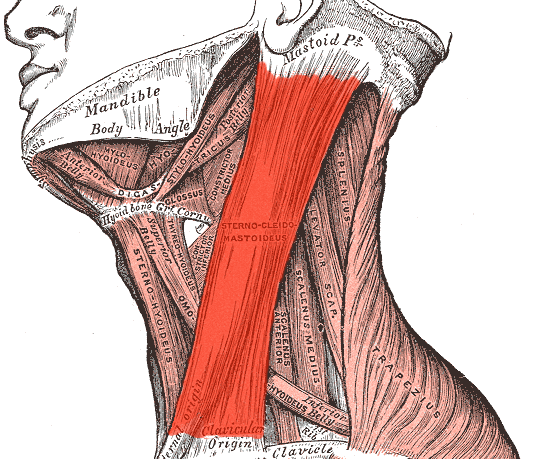
The primary action of the sternocleidomastoid muscle (SCM) is rotation of the head to the opposite side (turning your face left or right), obliquely rotating the neck, and flexion of the neck. In fact, one could say that the SCM muscles primarily support movement of the head in all possible directions (sideways, up and down, forward and backward, and in the direction of the shoulders).
In addition, the two SCM muscles (one on each side of the neck) help to maintain one’s posture, stabilize the neck (and head), give support in breathing and chewing, and connect to the temporomandibular joint (TMJ) helping to open and close the mouth.
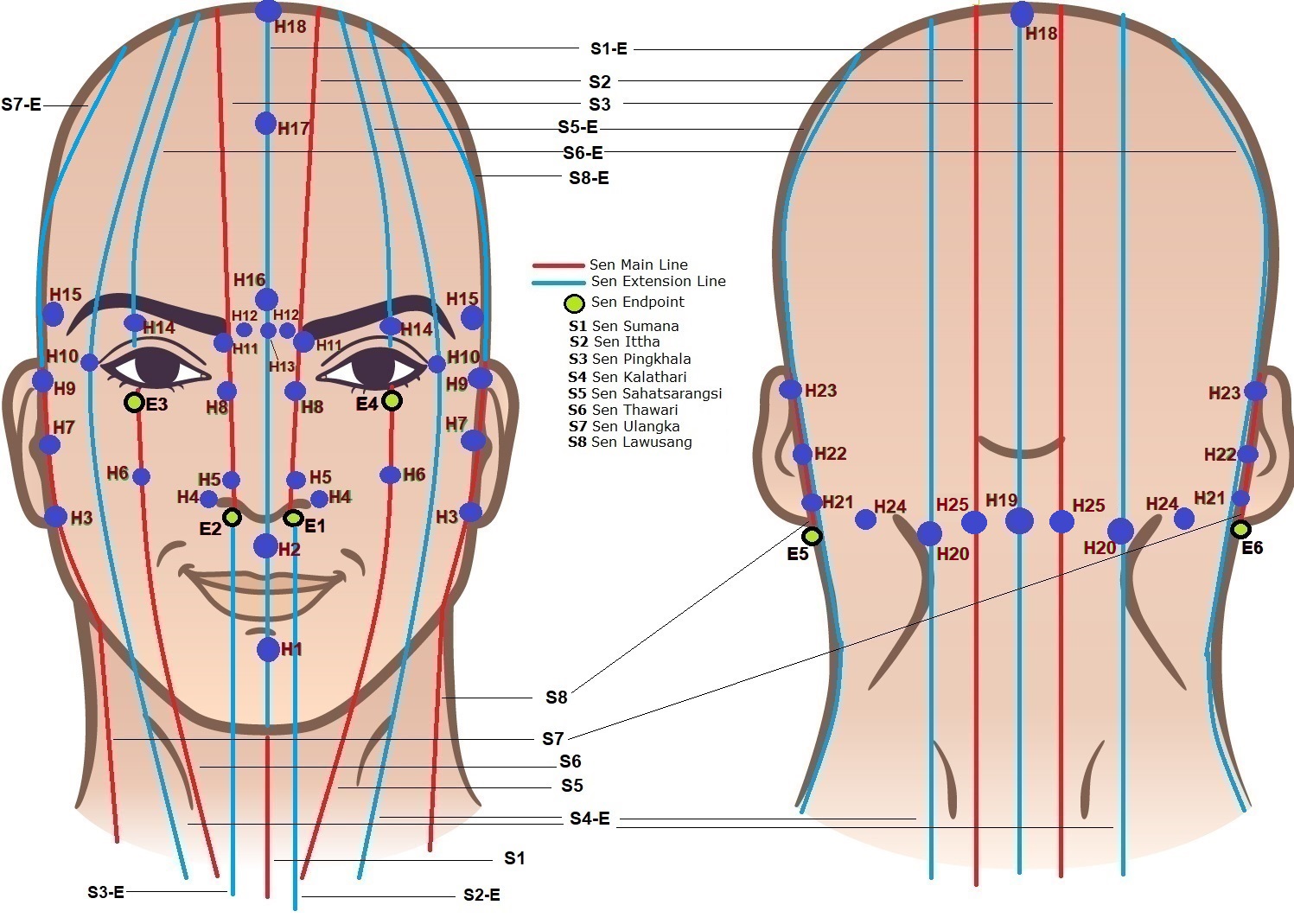
In the lead image of this article you can see that the SCM originates at the sternum and the clavicle, and reaches until the temporal bone of the skull just under the level of the ears. It’s attachment to the temporal bone covers the area where you find the Thai Acupressure Points H21, H24, and Sen Endpoints E5 (Sen Lawusang) and E6 (Sen Ulangka).
Hence, these Thai Acupoints (and actually the whole area of the base of the skull between points H20 and H21) are considered important to treat and relax the SCM muscles and prevent or alleviate headaches, neck and shoulder stiffness, neck, shoulder, facial, cheek, and jaw pains or discomforts, and torticollis (wryneck).
Apart from Thai acupressure therapy, it’s advised to also use other Thai Massage techniques to treat the SMC muscles, which notably includes a variety of neck stretches and the application of hot herbal compresses.

